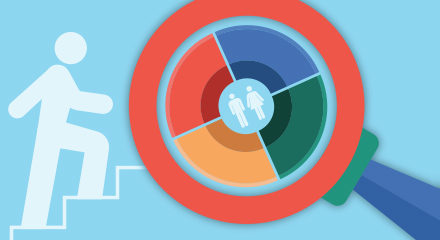It’s Not the 80’s Anymore: Women in Lighting
Posted 11/5/2020
by: Paul Pompeo
With the new issue of LD+A (just out) featuring my latest column, “Elephant in the Room: Lighting’s Diversity Problem,” I thought it might be interesting to revisit my February 2015 column which was a panel with several female lighting professionals.
What are your thoughts? Please feel free to share your comments below.
Panelists discuss some of the issues facing women in lighting

This is a column I’ve wanted to do for several years, but for one reason or another, never got the chance to complete it until now. To represent as many perspectives as possible on the issues women in the lighting industry care about, we reached out to a cross section of professionals, representing the agency, manufacturer, distributor and lighting design segments of our profession. Our panelists—Allie Schieffelin, chairman and CEO, The Lighting Quotient; Lara Cordell, director of technology/national account executive, Wiedenbach Brown; Melissa Deutsch Stein, CEO, Stan Deutsch Associates (SDA); Jennifer Jaques, owner, Lighting Application Sciences; and Kim Mercier, principal, Lighting Design Innovations and past president IES—helped immensely by suggesting many of the topics discussed here.
How do opportunities for women in lighting differ in 2015 from when you started?
Jaques: My first tradeshow experience as a consultant, in 2000, is a good example of how things have changed. Walking to the booth where I had been hired as product specialist, I noticed many booths with women standing in front holding brochures. These women were not dressed as you would expect—very high heels, very short skirts, very beautiful hair, heavy makeup.
Schieffelin: The lighting industry is almost a funny anomaly because many women have achieved greatness in the broad area of lighting. Design itself has been an accepted area for women. What is interesting, however, is that there is such a cultural dominance of men in the industry up and down the ranks, so there is a split between the manufacturing, contracting, distribution side of the coin—versus the design, development, schematics, planning side, which has had some women in it.
Deutsch Stein: There are very few female principals of agencies. I don’t know if the opportunities aren’t there, if people don’t want that level of stress, or if perhaps they’re parenting at the same time. When I go to agency principal meetings, I’m typically the only female—possibly one of two. When you take your two five-minute breaks between training sessions, it’s the only time you can get into the ladies’ room faster than to the men’s room [laughs].
Cordell: I graduated in 2003 and honestly don’t think I’ve noticed a difference. I started out in design [and] I’ve worked on three of the four sides of the industry. I don’t think that any side is less accepting of women, but I’ve seen that certain parts—such as distribution—seem to attract fewer women in outside sales roles.
Mercier: I believe the true barrier or barriers to equal participation have not yet been identified; we need to start there. The IES, like many professional organizations, has set out to identify these types of barriers to participation—with the Committee for Universal Engagement, for example.
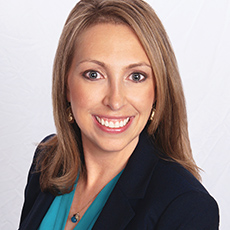
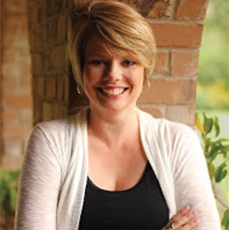
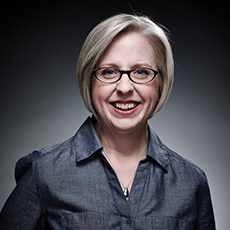
What challenges do women in the lighting industry face that their male counterparts may not experience?
Deutsch Stein: “Female/male” doesn’t come into my vernacular every day and I really don’t think about it. That I’m a woman doesn’t really come into play. I think of myself as a business manager, an owner—not as a woman. The decisions I make are business decisions—they are irrespective of gender.
Schieffelin: The first [challenge]…is pay and promotion: fix it immediately. Create an absolute environment for equal pay and equal work and equal promotional opportunities. The second relates to culture, which can mean different things to different people. In this realm, “culture” means everything from the actual day-to-day work environment, including women and men’s work environments and differing sensitivities. No one should be made to feel uncomfortable. There’s no excuse for conversation to devolve into topics that are not appropriate for all ears.
The culture of an organization [can also be seen] in the way we seek out the best people within and outside an organization to optimize any job opportunity or promotion. The extreme example—which happened all the time in the ’80s—is that men were in the leadership roles and picked successors who reminded them of themselves when they were a kid. But that isn’t a good enough criteria for hiring and promotion. You have to deeply know your people and their capability and you develop a culture where every participant wants to do more. And that gives you a big pool of people to select from. You may find out that an employee that was doing IT networking has the most phenomenal business writing skills. You may find out that your marketing expert actually has a deep passion for interior and aesthetic design and understanding of that.
Cordell: I never felt challenged as a woman until I went on maternity leave a year ago. I was determined to take the full 12 weeks off, but was concerned about who would cover my accounts while I was away. It’s not only about what happens when you go on maternity leave, but it’s the expectations when you return. Just as I wanted to go back, I think there are some women out there who struggle with the decision and may not be able to give 150 percent like they did before. I think people knew I would come back, but were surprised that I continued to work at the same pace as before, as if they expected the quality of my work would go down, which I kind of took offense to [laughs].
Mercier: The challenges faced by women are not unique to lighting; the largest challenge is anonymity—the accomplishments of women in lighting are frequently [viewed] as the accomplishments of others.
‘That I’m a woman doesn’t really come into play. I think of myself as a business manager, an owner—not as a woman. The decisions I make are business decisions’
Deutsch Stein
Do women in the lighting industry have to work harder to prove themselves equal to their male colleagues in the same job position?
Mercier: I would suggest that women in lighting don’t have to work harder to prove themselves any more so than in any other gender-imbalanced career path such as engineering or nursing. Within a team, the answer is no—those who work closely with others frequently respect or disrespect those individuals for their true abilities. Outside of the team, however, [the answer is] yes.
Deutsch Stein: That’s a tough question for me—being “born” into this industry, clearly I had an advantage getting in. People might say the agency was given to me on a silver platter, but I worked very hard outside [the lighting industry], so I have a different path than most. My father founded the agency but since then, I’ve worked hard to build the business.
Schieffelin: The old adage is “women have to work twice as hard to get half as much pay as men.” The challenge for both women and men is to work harder on their communications skills and in understanding that every person has different sets of values—emotional core—and ways of thinking.
Jaques: My opinion is that most women in most industries feel they do have to work harder. Surveys, blogs, stories by the water cooler seem to reinforce this.
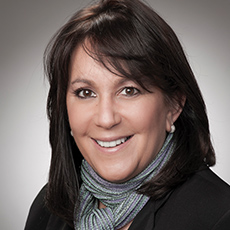
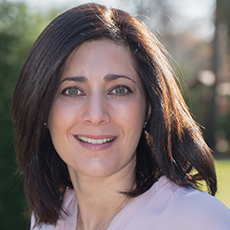
Let’s talk about the idea of the so-called “traditional” role of homemaker and striking a balance with your career.
Schieffelin: There are some men working 40 hours a week who become dissatisfied or unhappy at not being able to have a shorter week—not just for coaching or being at sporting events, but to be there for homework and bath time and feeding time. Conversely, there are some women who are working 60 hours, loving it and making it work. The point is, life is never in balance. It’s messy. We all need to have support for our home lives and have to have support in our work lives. Every person can only really be “in balance” when they have support in both domains.
Jaques: Many women have the mentality that they must do it all—be a good parent, attend every PTA meeting, cook meals from scratch, volunteer, be the perfect boss/employee, work 50-plus hours a week in their career, be an attentive spouse/partner—and spend quality time with the children. If they don’t manage all of this well, they feel guilty.
Cordell: For me, I travel for work and my husband does, too. In the past I used to book travel as it came up but now I have to coordinate with my husband to make sure one of us is with our son. So, I think it can be done; there’s just a new definition of what the working mother is. I should add that it is challenging, nonetheless, and I do have a newfound respect for stay-at-home mothers [laughs]—because that’s a difficult job unto itself.
Deutsch Stein: I think that my daughters seeing me work, have an important job and try to the best of my ability to balance the different aspects of my life is important in forming their personalities, their aspirations and expectations of what their life as an adult will be.



